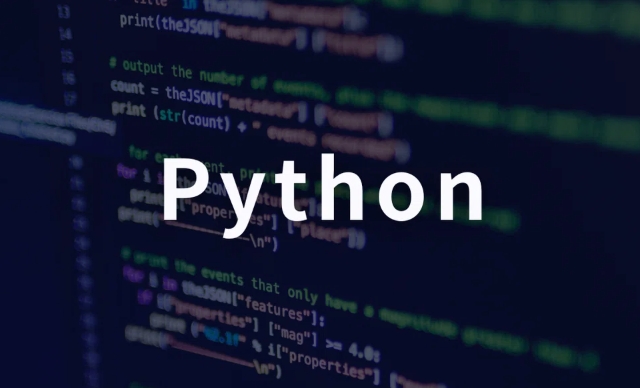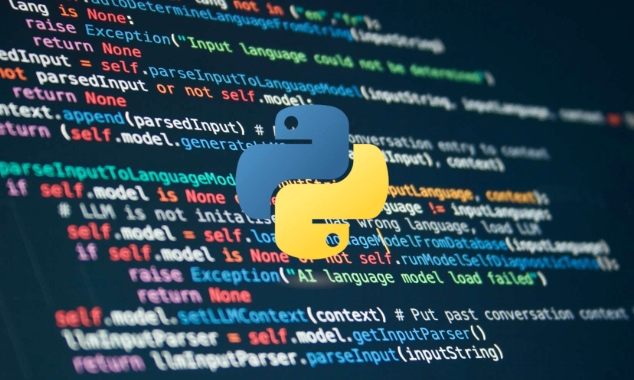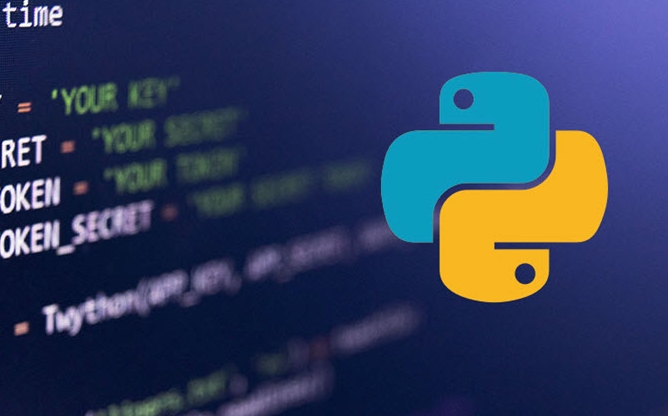What is a pure function in Python
Pure functions in Python refer to functions that always return the same output with no side effects given the same input. Its characteristics include: 1. Determinism, that is, the same input always produces the same output; 2. No side effects, that is, no external variables, no input data, and no interaction with the outside world. For example, def add(a, b): return ab is a pure function because no matter how many times add(2, 3) is called, it always returns 5 without changing anything else in the program. In contrast, functions that modify global variables or change input parameters are non-pure functions. The advantages of pure functions are: easier to test, more suitable for concurrent execution, cache results to improve performance, and can be well matched with functional programming tools such as map() and filter(). Suggestions for writing pure functions include avoiding the use or modifying global variables, not changing input parameters, and separating I/O operations from logic. Although not all functions must be pure functions, when building complex applications, pure functions should be preferred in core logic, and side effects should be used in logging, disk saving and other scenarios.

A pure function in Python is a function that, given the same inputs, will always return the same output and has no side effects. That means it doesn't modify variables outside its scope, mutate input data, or interact with the outside world (like printing to the screen or writing to a file).

This might sound abstract at first, but once you get the idea, it makes your code more predictable and easier to test.
What Makes a Function "Pure"?
There are two main characteristics of a pure function:

- Deterministic : The same input always gives the same output.
- No Side Effects : It doesn't change anything outside itself — not global variables, not the input arguments, nothing.
Here's an example of a pure function:
def add(a, b):
return ab No matter how many times you call add(2, 3) , it'll always return 5 . And it doesn't touch anything else in your program.

Now compare that to an impure function:
count = 0
def increment():
Global count
count = 1 This function changes a variable outside of itself ( count ), so it's not pure.
Why Should You Care About Pure Functions?
Pure functions help reduce bugs and make code easier to reason about. Here are a few practical benefits:
- Easier to test : You don't have to worry about setup or cleanup because they don't rely on or change external state.
- Better for concurrency : Since they don't share state, they're safer to use in parallel or multi-threaded environments.
- Cacheable : Because the output only depends on inputs, you can cache results for performance.
They also play well with functional programming tools like map() , filter() , and libraries like functools .
How to Write More Pure Functions
It's not always possible (or necessary) to write all your code this way, but here are some habits to lean into:
- Avoid using or modifying global variables.
- Don't change input parameters — especially mutable ones like lists or dicts. Instead, create new values and return them.
- Keep I/O operations (like reading/writing files or printing) separate from logic.
For example, instead of this:
def add_item(lst, item):
lst.append(item)Do this:
def add_item(lst, item):
return lst [item]The second version doesn't change the original list — it returns a new one.
When It's Okay to Break the Rules
Let's be real — not every function needs to be pure. Sometimes you need to update state or work with external systems. That's totally fine. Just be aware of when and why you're doing it.
If you're building complex apps or working with large data pipelines, aim for purity where it matters most — core logic, transformations, and business rules. Save side effects for things like logging, saving to disk, or user interaction.
Basically that's it.
The above is the detailed content of What is a pure function in Python. For more information, please follow other related articles on the PHP Chinese website!

Hot AI Tools

Undress AI Tool
Undress images for free

Undresser.AI Undress
AI-powered app for creating realistic nude photos

AI Clothes Remover
Online AI tool for removing clothes from photos.

Clothoff.io
AI clothes remover

Video Face Swap
Swap faces in any video effortlessly with our completely free AI face swap tool!

Hot Article

Hot Tools

Notepad++7.3.1
Easy-to-use and free code editor

SublimeText3 Chinese version
Chinese version, very easy to use

Zend Studio 13.0.1
Powerful PHP integrated development environment

Dreamweaver CS6
Visual web development tools

SublimeText3 Mac version
God-level code editing software (SublimeText3)

Hot Topics
 How to handle API authentication in Python
Jul 13, 2025 am 02:22 AM
How to handle API authentication in Python
Jul 13, 2025 am 02:22 AM
The key to dealing with API authentication is to understand and use the authentication method correctly. 1. APIKey is the simplest authentication method, usually placed in the request header or URL parameters; 2. BasicAuth uses username and password for Base64 encoding transmission, which is suitable for internal systems; 3. OAuth2 needs to obtain the token first through client_id and client_secret, and then bring the BearerToken in the request header; 4. In order to deal with the token expiration, the token management class can be encapsulated and automatically refreshed the token; in short, selecting the appropriate method according to the document and safely storing the key information is the key.
 How to parse large JSON files in Python?
Jul 13, 2025 am 01:46 AM
How to parse large JSON files in Python?
Jul 13, 2025 am 01:46 AM
How to efficiently handle large JSON files in Python? 1. Use the ijson library to stream and avoid memory overflow through item-by-item parsing; 2. If it is in JSONLines format, you can read it line by line and process it with json.loads(); 3. Or split the large file into small pieces and then process it separately. These methods effectively solve the memory limitation problem and are suitable for different scenarios.
 Python for loop over a tuple
Jul 13, 2025 am 02:55 AM
Python for loop over a tuple
Jul 13, 2025 am 02:55 AM
In Python, the method of traversing tuples with for loops includes directly iterating over elements, getting indexes and elements at the same time, and processing nested tuples. 1. Use the for loop directly to access each element in sequence without managing the index; 2. Use enumerate() to get the index and value at the same time. The default index is 0, and the start parameter can also be specified; 3. Nested tuples can be unpacked in the loop, but it is necessary to ensure that the subtuple structure is consistent, otherwise an unpacking error will be raised; in addition, the tuple is immutable and the content cannot be modified in the loop. Unwanted values can be ignored by \_. It is recommended to check whether the tuple is empty before traversing to avoid errors.
 How to make asynchronous API calls in Python
Jul 13, 2025 am 02:01 AM
How to make asynchronous API calls in Python
Jul 13, 2025 am 02:01 AM
Python implements asynchronous API calls with async/await with aiohttp. Use async to define coroutine functions and execute them through asyncio.run driver, for example: asyncdeffetch_data(): awaitasyncio.sleep(1); initiate asynchronous HTTP requests through aiohttp, and use asyncwith to create ClientSession and await response result; use asyncio.gather to package the task list; precautions include: avoiding blocking operations, not mixing synchronization code, and Jupyter needs to handle event loops specially. Master eventl
 What is a pure function in Python
Jul 14, 2025 am 12:18 AM
What is a pure function in Python
Jul 14, 2025 am 12:18 AM
Pure functions in Python refer to functions that always return the same output with no side effects given the same input. Its characteristics include: 1. Determinism, that is, the same input always produces the same output; 2. No side effects, that is, no external variables, no input data, and no interaction with the outside world. For example, defadd(a,b):returna b is a pure function because no matter how many times add(2,3) is called, it always returns 5 without changing other content in the program. In contrast, functions that modify global variables or change input parameters are non-pure functions. The advantages of pure functions are: easier to test, more suitable for concurrent execution, cache results to improve performance, and can be well matched with functional programming tools such as map() and filter().
 what is if else in python
Jul 13, 2025 am 02:48 AM
what is if else in python
Jul 13, 2025 am 02:48 AM
ifelse is the infrastructure used in Python for conditional judgment, and different code blocks are executed through the authenticity of the condition. It supports the use of elif to add branches when multi-condition judgment, and indentation is the syntax key; if num=15, the program outputs "this number is greater than 10"; if the assignment logic is required, ternary operators such as status="adult"ifage>=18else"minor" can be used. 1. Ifelse selects the execution path according to the true or false conditions; 2. Elif can add multiple condition branches; 3. Indentation determines the code's ownership, errors will lead to exceptions; 4. The ternary operator is suitable for simple assignment scenarios.
 Can a Python class have multiple constructors?
Jul 15, 2025 am 02:54 AM
Can a Python class have multiple constructors?
Jul 15, 2025 am 02:54 AM
Yes,aPythonclasscanhavemultipleconstructorsthroughalternativetechniques.1.Usedefaultargumentsinthe__init__methodtoallowflexibleinitializationwithvaryingnumbersofparameters.2.Defineclassmethodsasalternativeconstructorsforclearerandscalableobjectcreati
 How to prevent a method from being overridden in Python?
Jul 13, 2025 am 02:56 AM
How to prevent a method from being overridden in Python?
Jul 13, 2025 am 02:56 AM
In Python, although there is no built-in final keyword, it can simulate unsurpassable methods through name rewriting, runtime exceptions, decorators, etc. 1. Use double underscore prefix to trigger name rewriting, making it difficult for subclasses to overwrite methods; 2. judge the caller type in the method and throw an exception to prevent subclass redefinition; 3. Use a custom decorator to mark the method as final, and check it in combination with metaclass or class decorator; 4. The behavior can be encapsulated as property attributes to reduce the possibility of being modified. These methods provide varying degrees of protection, but none of them completely restrict the coverage behavior.







